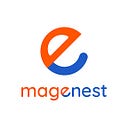HOW TO ADD GOOGLE ANALYTICS TO SHOPIFY STORE
Integrating Google Analytics with your Shopify store is crucial for understanding your customers, tracking performance, and refining marketing strategies. Follow these steps to seamlessly add Google Analytics to your Shopify storefront:
Step 1: Sign Up for Google Analytics
If you don’t have a Google Analytics account, create one. Visit analytics.google.com, sign in with your Google account, and follow the prompts to set up a new account for your Shopify store.
Step 2: Access Your Google Analytics Tracking ID
Once your account is set up, Google Analytics will provide you with a unique Tracking ID. This ID is essential for connecting your Shopify store to Google Analytics.
Step 3: Log in to Your Shopify Admin
Access your Shopify store’s admin panel. From the dashboard, navigate to the ‘Online Store’ section.
Step 4: Access Preferences
In the ‘Online Store’ section, find and select ‘Preferences.’
Step 5: Enter Your Google Analytics Tracking ID
Scroll down to the ‘Google Analytics’ field. Paste your Google Analytics Tracking ID in the provided space.
Step 6: Save Changes
Ensure that you save your changes by clicking on the ‘Save’ button. Once saved, your Shopify store is connected to Google Analytics.
Step 7: Verify Tracking
To confirm that Google Analytics is correctly installed, visit your Shopify store and navigate through a few pages. Then, return to your Google Analytics account and check the ‘Real-Time’ section. You should see active users on your site if the tracking is working correctly.
Step 8: Utilize Google Analytics Features
Now that Google Analytics is integrated into your Shopify store, explore the various features available:
- Audience Insights: Understand your visitors, their demographics, locations, and behavior.
- Acquisition Analysis: Track the sources bringing traffic to your store (organic search, social media, referrals, etc.).
- Behavior Analysis: Analyze how visitors interact with your site, which pages they visit, and for how long.
- Conversion Tracking: Set up goals and track conversions to measure the success of your marketing campaigns.
Step 9: Utilize Enhanced Ecommerce Features (Optional)
For advanced tracking, consider enabling Enhanced Ecommerce features. This allows you to track specific actions like product impressions, clicks, adding items to cart, and completed purchases.
Conclusion
Integrating Google Analytics into your Shopify store empowers you with valuable insights into your customers’ behavior and your store’s performance. By following these steps and exploring the analytics features, you’ll be well-equipped to make data-driven decisions that enhance your store’s efficiency, user experience, and overall success.
Our detailed guide here: https://magenest.com/en/add-google-analytics-to-shopify-store/
